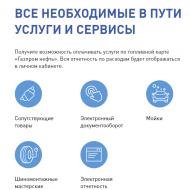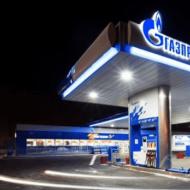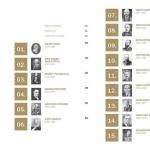
BrokerCreditService rating. Ratings and awards. Subsidiaries and related companies
|
01 February 2020 01 January 2020 01 December 2019 01 November 2019 01 October 2019 01 September 2019 01 August 2019 01 July 2019 01 June 2019 01 May 2019 01 April 2019 01 March 2019 01 February 2019 01 January 2019 01 December 2018 01 November 2018 01 October 2018 01 September 2018 01 August 2018 01 July 2018 01 June 2018 01 May 2018 01 April 2018 01 March 2018 01 February 2018 01 January 2018 01 December 2017 01 November 2017 01 October 2017 01 September 2017 01 August 2017 01 July 2017 01 June 2017 01 May 2017 01 April 2017 01 March 2017 01 February 2017 01 January 2017 01 December 2016 01 November 2016 01 October 2016 01 September 2016 01 August 2016 01 July 2016 01 June 2016 01 May 2016 01 April 2016 01 March 2016 01 February 2016 01 January 2016 01 December 2015 01 November 2015 01 October 2015 01 September 2015 01 August 2015 01 July 2015 01 June 2015 01 May 2015 01 April 2015 01 March 2015 01 February 2015 01 January 2015 01 December 2014 01 November 2014 01 October 2014 01 September 2014 01 August 2014 01 July 2014 01 June 2014 01 May 2014 01 April 2014 01 March 2014 01 February 2014 01 January 2014 01 December 2013 01 November 2013 01 October 2013 01 September 2013 01 August 2013 01 July 2013 01 June 2013 01 May 2013 01 April 2013 01 March 2013 01 February 2013 01 January 2013 01 December 2012 01 November 2012 01 October 2012 01 September 2012 01 August 2012 01 July 2012 01 June 2012 01 May 2012 01 April 2012 01 March 2012 01 February 2012 01 January 2012 01 December 2011 01 November 2011 01 October 2011 01 September 2011 01 August 2011 01 July 2011 01 June 2011 01 May 2011 01 April 2011 01 March 2011 01 February 2011 01 January 2011 01 December 2010 01 November 2010 01 October 2010 01 September 2010 01 August 2010 01 July 2010 01 June 2010 01 May 2010 01 April 2010 01 March 2010 01 February 2010 01 January 2010 01 December 2009 01 November 2009 01 October 2009 01 September 2009 01 August 2009 01 July 2009 01 June 2009 01 May 2009 01 April 2009 01 March 2009 01 February 2009 01 January 2009 01 December 2008 01 November 2008 01 October 2008 01 September 2008 01 August 2008 01 July 2008 01 June 2008 01 May 2008 01 April 2008 01 March 2008 01 February 2008 01 January 2008 01 December 2007 01 November 2007 01 October 2007 01 September 2007 01 August 2007 01 July 2007 01 June 2007 01 May 2007 01 April 2007 01 March 2007 01 February 2007 01 January 2007 01 December 2006 01 November 2006 01 October 2006 01 September 2006 01 August 2006 01 July 2006 01 June 2006 01 May 2006 01 April 2006 01 March 2006 01 February 2006 01 January 2006 01 December 2005 01 November 2005 01 October 2005 01 September 2005 01 August 2005 01 July 2005 01 June 2005 01 May 2005 01 April 2005 01 March 2005 01 February 2005 01 January 2005 01 December 2004 01 November 2004 01 October 2004 01 September 2004 01 August 2004 01 July 2004 01 June 2004 01 May 2004 01 April 2004 01 March 2004 01 February 2004 |
& nbsp & nbsp & nbsp Select report: |
By the reliability of a bank we mean a set of factors under which a bank is able to fulfill its obligations, have an adequate margin of safety in crisis situations, and not violate the standards and laws established by the Bank of Russia.
It should be borne in mind that only on the basis of reporting it is impossible to accurately determine the degree of the bank's reliability, therefore, the study below is indicative in nature.
Bank stability is the ability to withstand any external influences. The dynamics over a certain period may show stability (either improvement or deterioration) of various indicators, which may also indicate the bank's stability.
Joint Stock Company "BCS Bank" is large russian bank and among them it ranks 79th in terms of net assets.
As of the reporting date (January 01, 2020), the net assets of BCS BANK amounted to 72.00 billion rubles Per year assets increased by 15.65% ... Net asset growth positively influenced the return on assets ROI: over the year, the net return on assets increased from 0.77% to 1.37% .
For the services provided, the bank is mainly attracts client money, and these funds are sufficient diversified (between legal entities and individuals), and invests funds mainly in credits.
BCS BANK - has the right to work with non-state pension funds that carry out compulsory pension insurance
, and can attract pension savings and savings for housing military personnel; has the right to open accounts and deposits in accordance with Law 213-FZ of July 21, 2014 No.
, i.e. organizations of strategic importance for the military-industrial complex and security of the Russian Federation; to a credit institution authorized representatives of the Bank of Russia have been appointed.
Liquidity and reliability
The bank's liquid assets are those bank funds that can be quickly converted into cash to return them to depositors. To assess liquidity, consider a period of about 30 days, during which the bank will be able (or unable) to fulfill part of its financial obligations (since no bank can return all obligations within 30 days). This "portion" is called the "estimated cash outflow". Liquidity can be considered an important component of the concept of bank reliability.
Briefly structure highly liquid assets represent in the form of a table:
| Indicator name | 01 January 2019, thousand rubles | 01 January 2020, thousand rubles | ||
|---|---|---|---|---|
| cash on hand | 3 821 251 | (8.23%) | 2 755 188 | (5.51%) |
| funds on accounts with the Bank of Russia | 1 499 404 | (3.23%) | 2 590 002 | (5.18%) |
| correspondent accounts NOSTRO in banks (net) | 5 807 389 | (12.51%) | 1 497 655 | (2.99%) |
| interbank loans placed for up to 30 days | 30 864 679 | (66.49%) | 38 868 099 | (77.70%) |
| highly liquid securities of the Russian Federation | 4 424 701 | (9.53%) | 4 044 728 | (8.09%) |
| highly liquid securities of banks and states | (0.00%) | 285 985 | (0.57%) | |
| highly liquid assets with discounts and adjustments (based on Ordinance No. 3269-U dated 05/31/2014) | 46 417 424 | (100.00%) | 50 023 038 | (100.00%) |
From the table of liquid assets, we see that the amount of highly liquid securities of the Russian Federation has slightly changed, the amount of interbank loans placed for up to 30 days has increased, the amount of funds in accounts with the Bank of Russia, highly liquid securities of banks and states has increased, the amount of funds in cash has decreased , the amount of NOSTRO correspondent accounts in banks (net) decreased significantly, while the volume of highly liquid assets taking into account discounts and adjustments (based on Ordinance No. 3269-U dated 05/31/2014) increased over the year from 46.42 to 50.02 billion rubles
Structure current liabilities is given in the following table:
| Indicator name | 01 January 2019, thousand rubles | 01 January 2020, thousand rubles | ||
|---|---|---|---|---|
| deposits of individuals with a term of over a year | 4 713 809 | (9.36%) | 2 529 616 | (4.36%) |
| other deposits of individuals (including individual entrepreneurs) (for up to 1 year) | 31 233 914 | (62.02%) | 37 052 438 | (63.87%) |
| deposits and other funds of legal entities (up to 1 year) | 7 370 770 | (14.64%) | 8 166 139 | (14.08%) |
| incl. current funds of legal entities (without individual entrepreneurs) | 6 955 591 | (13.81%) | 7 424 822 | (12.80%) |
| correspondent accounts of LORO banks | 15 412 | (0.03%) | 7 649 | (0.01%) |
| interbank loans received for up to 30 days | 4 991 322 | (9.91%) | 9 500 000 | (16.38%) |
| own securities | (0.00%) | (0.00%) | ||
| liabilities to pay interest, delinquency, payables and other debts | 2 033 619 | (4.04%) | 754 357 | (1.30%) |
| expected outflow money | 13 347 743 | (26.51%) | 17 360 186 | (29.93%) |
| current liabilities | 50 358 846 | (100.00%) | 58 010 199 | (100.00%) |
During the period under review, what happened to the resource base was that the amounts of other deposits of individuals (including individual entrepreneurs) (for a period of up to 1 year), deposits and other funds of legal entities (for a period of up to 1 year), incl. h current funds of legal entities (without individual entrepreneurs), own securities, the amount of interbank loans received for a period of up to 30 days has greatly increased, the amount of deposits of individuals with a maturity of more than a year, correspondent accounts of LORO banks, liabilities to pay interest, delays, have significantly decreased, payables and other payables, while the expected cash outflow increased over the year from 13.35 to 17.36 billion rubles.
At the moment in question, the ratio of highly liquid assets (funds that are readily available to the bank within the next month) and the estimated outflow of current liabilities gives us the value 288.15% what says good safety factor to overcome the possible outflow of funds of the bank's clients.
In correlation with this, it is important to consider the standards of instant (H2) and current (N3) liquidity, the minimum values \u200b\u200bof which are set at 15% and 50%, respectively. Here we see that the standards for H2 and H3 are now at sufficient level.
Now let's track the dynamics of change liquidity indicators during a year:
According to the median method (rejection of sharp peaks): the sum of the instantaneous liquidity ratio H2 during year and last half year tends to decrease, the amount of the current liquidity ratio N3 during of the year pretty big and tends to decrease, however, over the last half a year tends to a slight fall, and the bank's expert reliability during of the year pretty big and has a tendency to increase, however, over the last half a year tends to significant drop .
Other ratios for assessing the liquidity of the bank of JSC "BCS BANK" can be seen at this link.
Balance structure and dynamics
The volume of income-generating assets of the bank is 87.66% in total assets, and the volume of interest-bearing liabilities is 89.74% in the total volume of liabilities. The volume of earning assets roughly corresponds to the average for large russian banks (84%).
Structure earning assets now and a year ago:
| Indicator name | 01 January 2019, thousand rubles | 01 January 2020, thousand rubles | ||
|---|---|---|---|---|
| Interbank loans | 30 864 679 | (63.93%) | 43 868 099 | (69.50%) |
| Loans to legal entities | 3 342 300 | (6.92%) | 9 844 513 | (15.60%) |
| Loans to individuals | 291 566 | (0.60%) | 354 890 | (0.56%) |
| Promissory notes | (0.00%) | (0.00%) | ||
| Investments in leasing operations and acquired rights of claim | (0.00%) | (0.00%) | ||
| Investments in securities | 13 748 009 | (28.48%) | 9 047 515 | (14.33%) |
| Other income loans | (0.00%) | (0.00%) | ||
| Profitable assets | 48 276 402 | (100.00%) | 63 118 955 | (100.00%) |
We see that the amounts of Promissory Notes, Investments in leasing operations and acquired rights of claim have changed slightly, the amounts of Interbank loans, Loans to individuals have increased, the amounts of Loans to legal entities have greatly increased, the amount of Investments in securities has significantly decreased, and the total amount of profitable assets increased by 30.7% from 48.28 to 63.12 billion rubles
Analytics for degree of security issued loans, as well as their structure:
| Indicator name | 01 January 2019, thousand rubles | 01 January 2020, thousand rubles | ||
|---|---|---|---|---|
| Securitiesaccepted as collateral for loans issued | (0.00%) | (0.00%) | ||
| Property accepted as security | 2 973 013 | (8.62%) | 11 204 083 | (20.72%) |
| Precious metalstaken to provide | (0.00%) | (0.00%) | ||
| Received guarantees and sureties | 21 580 572 | (62.56%) | 87 497 249 | (161.83%) |
| Loan portfolio amount | 34 498 545 | (100.00%) | 54 067 502 | (100.00%) |
| - incl. loans to legal entities | 3 341 804 | (9.69%) | 7 189 028 | (13.30%) |
| - incl. loans to individuals persons | 291 566 | (0.85%) | 354 890 | (0.66%) |
| - incl. loans to banks | 30 864 679 | (89.47%) | 43 868 099 | (81.14%) |
Analysis of the table suggests that the bank focuses on lending to banks, the form of which is guarantees and sureties. General level The collateralization of loans is quite high and possible loan defaults are likely to be offset by the amount of collateral.
Brief structure interest liabilities (i.e. for which the bank usually pays interest to the client):
| Indicator name | 01 January 2019, thousand rubles | 01 January 2020, thousand rubles | ||
|---|---|---|---|---|
| Bank funds (interbank and correspondent accounts) | 7 506 734 | (13.48%) | 12 177 649 | (18.85%) |
| Legal funds persons | 21 860 888 | (39.25%) | 22 090 073 | (34.19%) |
| - incl. current funds of legal entities persons | 16 580 222 | (29.77%) | 16 682 455 | (25.82%) |
| Individual contributions persons | 26 323 092 | (47.27%) | 30 324 421 | (46.93%) |
| Other interest-bearing liabilities | (0.00%) | 19 744 | (0.03%) | |
| - incl. loans from the Bank of Russia | (0.00%) | (0.00%) | ||
| Interest liabilities | 55 691 155 | (100.00%) | 64 611 887 | (100.00%) |
We see that the amounts of funds of legal entities have changed insignificantly. persons, Contributions of individuals. persons, the amounts due to banks (interbank loans and correspondent accounts) have increased significantly, and the total amount of interest-bearing liabilities increased by 16.0% from 55.69 to 64.61 billion rubles.
The structure of assets and liabilities of the bank of JSC "BCS BANK" can be considered in more detail.
Profitability
The profitability of sources of equity (calculated according to balance sheet data) increased over the year from 11.40% to 13.98% ... At the same time, the return on equity ROE (calculated on forms 102 and 134) increased over the year from 7.35% to 14.09% (here and below data are given in percent per annum for the next quarter date).
Net interest margin increased over the year from 2.09% to 2.19% ... The profitability of lending operations decreased over the year from 8.83% to 7.36% ... The cost of funds raised has increased over the year from 2.77% to 3.01% ... The cost of attracted funds from banks increased over the year from 2.51% to 4.57% ... The cost of funds of the population (individuals) increased over the year from
The bank was founded in 1989 on a share basis under the name "Iskitim Commercial Bank" in the city of Iskitim (Novosibirsk Region).
In 1991 it received a new name - “ Commercial Bank "Ros".
In February 2005, the bank entered the deposit insurance system.
In 2006, CB Ros was acquired by one of the country's largest brokers in terms of turnover - BrokerCreditService Company LLC (BCS Company) *. The credit institution was renamed BCS Bank and corporatized. Experts called the issuance of margin loans secured by securities through a bank as one of the objectives of the purchase, bypassing the FFMS regulation. However, BCS owners set a different goal - to create a universal banking institution and form a full line of banking services, including retail: consumer and car loans, credit cards.
In November 2007, the credit institution was renamed BCS - Investment Bank.
Since November 2018, the bank has again been operating under the name BCS Bank JSC. In addition to its main focus - investment services, operations in the currency and securities markets - the bank is also developing retail lending.
As of July 1, 2019, the lending institution's net assets amounted to RUB 70.37 billion, and its own funds amounted to RUB 6.34 billion. At the end of the first half of 2019, the bank demonstrates a profit of 350.9 million rubles.
Branch network:
head office (Moscow);
1 branch (Moscow);
53 credit and cash offices;
38 representations.
In December 2018, the bank's head office was transferred from Novosibirsk to Moscow and is located at the Moscow branch.
Owners:
Oleg Mikhasenko - 84.48%;
Alexey Annenkov - 14.62%;
Elena Stepakina - 0.90%.
The bank is part of the BCS FG and is 100% controlled by its parent company, BCS Company LLC (the main ultimate beneficiary is Oleg Mikhasenko).
Board of Directors: Oleg Mikhasenko (chairman), Konstantin Khlyzov, Stanislav Novikov, Dmitry Peshnev-Podolsky, Nikita Ponomarev.
Governing body:Dmitry Peshnev-Podolsky (chairman), Marina Rodionova, Denis Ivanishchenko.
* LLC "Company Brokercreditservice" (BCS Company) is one of the leaders of the Russian investment market, the parent company of the financial group of the same name. Founded in 1995 in Novosibirsk, opened its first office in Moscow in 2000. The main owner of the group is its founder and president Oleg Mikhasenko.
In addition to the bank and BCS Company LLC, the financial group includes BCS Management Company CJSC, BCS Real Estate Funds Management Company LLC, BrokerCreditService (Cyprus) Limited, BCS Life Insurance IC, BCS Training Center. The group employs about 4.5 thousand employees. FG BCS is one of the leaders russian market brokerage services, in particular, it is in the top 3 in terms of the number of active clients and the volume of client transactions in the stock market according to the Moscow Exchange.
How to understand which bank is more reliable, but without reading thousands of reviews and all financial statements? Who does the state entrust its money to? A credit rating agency can help answer these questions. His answer is a letter code, that is, a credit rating.
What is credit rating
- whether the bank will be able to pay off debts;
- what about the business reputation of top managers;
- is everything okay with accounting reports;
- whether the company is involved in dubious scams;
- whether the asset portfolio is protected from force majeure.
There are actually many more such factors. In total, they display a rating that shows how great the risk of not paying off debts is.
Depending on the industry, there are credit ratings, ratings for insurance companies, MFIs, non-financial companies, etc.
Who and how the companies are ranked
Banks are ranked based on default risk: from AAA (minimal risk) to D (ultra-high risk, close to default or default).
| ACRA | RA Expert | Credit quality |
|---|---|---|
| AAA | ruAAA | The highest |
| AA + | ruAA + | High |
| AA | ruAA | |
| AA- | ruAA- | |
| A + | ruA + | The quality is above average |
| AND | ruA | |
| AND- | ruA- | |
| BBB + | ruBBB + | Moderate |
| BBB | ruBBB | |
| BBB- | ruBBB- | |
| BB + | ruBB + | Moderately low |
| BB | ruBB | |
| BB- | ruBB- | |
| B + | ruB + | Low |
| IN | ruB | |
| IN- | ruB- | |
| CCC | ruCCC | Very low |
| SS | ruCC | |
| FROM | ruC | |
| RD | ruRD | Pre-default state |
| SD | ruD | Default on one or more obligations |
| D |
Bank with which rating to choose
Regulatory authorities usually determine investment level from BBB- and above. But this is the lower limit.
For example, to hold funds from the Federal Treasury, a bank must have a rating of at least A + from two accredited rating agencies. And in 2017 from the bank "Otkrytie" pension funds the savings had to be taken away as ACRA downgraded the rating to BBB-.
Is one rating enough to choose
Of course, the more data the better. Choosing a bank only on the basis of a rating is the easiest way: everything was calculated before you, you just have to trust the analysts of the rating agency.
Nevertheless, even the state sometimes makes mistakes in choosing a bank. So, during the crisis of 2008-2009. several banks did not return the money taken from the Central Bank in an unsecured loan. Although the credit rating allowed them to borrow large sums and without security.
the main thing
- Credit rating is an assessment of the company's ability to pay its debts.
- The rating is prepared based on a variety of data about the bank.
- The higher the rating, the better. Ideally, AAA.
- Investment ratings are considered to be BBB- and higher. Below - "trash", with a high risk.
- By choosing a bank based on its rating only, you trust the analytics and methodology of the company it represents. If you don't trust, read reviews and analyze reports. You can start with banki.ru
Credit report date 28.01.2018
The recommendations are valid for 1 year
1. Full name of the issuer
Joint Stock Company "BCS Bank"
- The bank's own rating in a stable situation - A
- The bank's rating in a stressful situation (excluding the support of the main shareholder) is B.
- The expected level of support is low.
Based on the results of the risk assessment carried out, we recommend carrying out operations to place funds in financial instruments The Bank within the limits of the sums limited by the insured amount of SC "ASV" - 1.4 million rubles.
3. SWOT analysis
Key positives:
- BCS Bank JSC is an average Russian bank (88th in terms of assets and 105th in terms of own capital as of 01.12.2018). The bank is part of the BCS financial group, which is one of the leaders of the Russian investment market and the leading operator of the Russian stock market by the volume of trade turnover.
- It has a network of branches: 1 branch, 1 operational office, 53 credit and cash office, 39 representative offices.
- A very good margin for capital adequacy ratios (Н1.0 \u003d 28.295%, Н1.1 \u003d 13.845% as of 01.12.2018, with the threshold of 8% and 4.5%, respectively).
- Good quality and liquidity of a significant part of assets (over 50% as of 01.12.2018 accounted for funds in the NCC, the Bank of Russia and the IBC and NOSTRO accounts).
- Balanced funding structure (deposits individuals make up 45.01% of borrowed funds under RAS as of 01.12.2018, funds of legal entities. persons - 40%).
Key negative points:
- The likelihood of receiving support from shareholders is assessed as low.
- The bank is mainly used as settlement bank companies of the group engaged in investment business on the organized securities market, which determines the weak position of the bank in the classical banking business.
4. Ownership structure
100% - Oleg Vladimirovich Mikhasenko (through BCS Company LLC).
4.1. Primary Ultimate Beneficiary
100% owned by O. V. Mikhasenko
4.2. The likelihood of shareholder support in the event of a crisis
The likelihood of support for the Bank from the main shareholders is assessed as low.
5. Analysis of key financial indicators
Reporting of the Bank as of 01.12.2018 (billion rubles, changes for 11 months) in accordance with RAS (data and decryptions in accordance with IFRS for 9 months of 2018 are also used).
Capital - 6.524 billion rubles. (+0.285 billion rubles)to 123form.
Assets - 60.888 billion rubles. (+6.462 billion rubles), including:
RUB 10.016 billion (+4.172 billion rubles.) - cash desk and correspondent accounts.
RUB 30.232 billion(6.510 billion rubles)- interbank loans.
RUB 14.071 billion (-4.119 billion rubles)- investments in securities.
3.184 billion rubles creditslegal entitypersons (-0.698 billion rubles),including balance sheet overdue debt - 0.204 billion rubles. (6.41%).
As of June 30, 2018, the Bank has two borrowers with the total issued loans in excess of 0.432 billion rubles. (large credit risk exceeding 10% of equity). The total amount of such loans is 1.191,070 billion rubles. or 33.3% of the total volume of issued loans.
RUB 0.293 billion creditsphysicalpersons (+0.077 billion rubles),including balance sheet overdue debt - 0.030 billion rubles. (10.4%).
0.200 billion rubles (+0.037 billion rubles) - property (fixed assets, capital investment etc.).
Liabilities:
RUB 21.905 billion (-5.755 billion rubles.) - funds of legal entities persons.
RUB 24.638 billion (+6.806 billion rubles.) - contributions of physical. persons.
7.748 billion rubles (+5.987 billion rubles) - facilities credit institutions and the Central Bank.
0.836 billion rubles (-0.286 billion rubles.) - formed reserves.
Profit / loss (according to RAS):
Profit for 11 months of 2018 amounted to RUB 0.232 billion. For 2017 - net profit amounted to RUB 0.403 billion. (For 2016 - net profit of 0.357 billion rubles, for 2015 - net profit of 0.322 billion rubles).
Appendix 1. Dynamics of the values \u200b\u200bof the main mandatory ratios (liquidity and capital).
Appendix 1. Dynamics of the values \u200b\u200bof the main mandatory ratios (liquidity and capital)
Changes in the Adequacy and Capital Ratios

Dynamics of liquidity ratios

Appendix 2. Dynamics of the composition of assets, including the structure of the loan portfolio.
Assets composition

Loan portfolio

Appendix 3. Quality of the loan portfolio (RAS and IFRS).
The quality of the RAS loan portfolio (overdue debt and reserves,%).

Loan portfolio quality according to IFRS as of 30.06.2018

Appendix 4. Dynamics of the composition of liabilities (including borrowed funds) and profitability indicators.
Composition of liabilities
Involved funds

Appendix 5. Basic indicators according to RAS, thousand rubles.
|
ASSETS |
01.12.2018 |
01.11.2018 |
01.10.2018 |
01.07.2018 |
01.04.2018 |
01.01.2018 |
01.12.2017 |
|
|
Availability |
10 016 044 |
7 803 447 |
13 274 753 |
7 878 083 |
9 148 779 |
5 844 406 |
7 905 780 |
|
|
Interbank loans (deposits) granted (placed) |
||||||||
|
Loans to the Ministry of Finance, constituent entities of the Russian Federation and authorities local government |
||||||||
|
Legal loans individuals and individual entrepreneurs |
||||||||
|
1.2.1.3.7. |
incl. Overdue loans to legal entities and individual entrepreneurs |
|||||||
|
Loans to individuals |
||||||||
|
1.2.1.4.7. |
incl. Overdue debt on loans to individual persons |
|||||||
|
33 709 343 |
34 802 527 |
32 366 939 |
36 284 623 |
22 871 485 |
26 424 536 |
29 516 354 |
||
|
14 086 238 |
16 402 023 |
14 346 477 |
16 400 465 |
17 421 115 |
18 759 335 |
17 706 666 |
||
|
Funds in payments |
||||||||
|
1 903 112 |
1 770 971 |
2 872 421 |
1 604 947 |
2 207 832 |
2 433 279 |
4 227 658 |
||
|
Interest requirements |
||||||||
|
Business reputation |
||||||||
|
Property |
||||||||
|
Other assets |
1 107 169 |
1 037 079 |
1 182 378 |
|||||
|
|
Total ASSETS |
61 037 125 |
62 012 167 |
64 259 529 |
63 190 947 |
52 603 622 |
54 437 841 |
60 343 507 |
|
PASSIVES |
||||||||
|
Sources of own funds |
3 381 029 |
3 389 439 |
3 383 686 |
3 242 068 |
3 344 966 |
3 495 997 |
3 495 803 |
|
|
Provision for possible losses |
1 125 514 |
1 134 167 |
1 227 660 |
|||||
|
Funds of credit institutions |
||||||||
|
Legal funds persons |
||||||||
|
Funds from budgets, the Ministry of Finance, constituent entities of the Russian Federation and local governments |
||||||||
|
Deposits (funds) of individuals and individual entrepreneurs |
||||||||
|
Obligations to pay interest |
||||||||
|
Involved funds |
54 736 942 |
55 517 135 |
57 390 027 |
56 954 851 |
46 035 348 |
47 539 521 |
52 464 779 |
|
|
Other liabilities |
2 074 753 |
2 291 605 |
2 659 305 |
2 144 176 |
2 097 766 |
2 268 141 |
3 155 223 |
|
|
Financial liabilities at fair value through profit or loss |
||||||||
|
|
Total LIABILITIES |
61 037 125 |
62 012 167 |
64 259 529 |
63 190 947 |
52 603 622 |
54 437 841 |
60 343 507 |
|
OUTBALANCE |
||||||||
|
Securities |
||||||||
|
Property |
||||||||
|
Precious metals |
||||||||
|
Collateral for placed funds |
2 973 038 |
2 995 338 |
2 248 505 |
2 356 232 |
4 541 712 |
4 322 686 |
2 356 207 |
|
|
Issued guarantees and sureties |
||||||||
|
Unused guarantee limits |
||||||||
|
Unused lines of credit and overdraft |
||||||||
|
Contingent liabilities |
1 765 984 |
1 925 927 |
2 406 287 |
Subsidiaries and related companies
Does not participate in the authorized capital of other companies
Appendix 7. Sectoral structure of the loan portfolio and concentration of customer funds under IFRS
Sectoral structure of the Group's loan portfolio under IFRS (as of 30.06.2018)

Customer accounts (by type) in liabilities under IFRS (as of 30.06.2018)

Appendix 8.Dynamics of the Bank's financial results and assets since 2008.
Dynamics of financial results (million rubles)

Dynamics of assets (mln rubles) and their growth rates (yoy,%).

Appendix 9. Diagram of the relationship between the bank and persons who control or have significant influence over the bank
Rating moneyzzz (together with @riskovik) :
- A - No limit - High level reliability
- B - Limitations within the DIA - Medium level of reliability
- C - Do not post - Low level of reliability
Our site is intended for both banking analysts and bank customers (for example, depositors and legal entities to assess the financial condition of the bank in which the account is opened).
The website contains processed analytical information collected from open sources (Bank of Russia, rating agencies, DIA and others) in a convenient form.
Bank clients will find information about financial condition your bank, which is easy to track every month immediately after the release of new bank statements. We offer several models for assessing reliability and financial stability bank. Special attention paid indicative analysis of the bank's activities for express diagnostics of the financial condition of banks, as well as dynamic and comparative analysis based on ratings (rankings) of banks ... If you are a client of several banks, then by adding them to Favorites, you can quickly receive data on the financial condition of credit institutions, as well as insider information.
Potential clients can study all the available information about a particular bank and choose reliable bank... Banks can be rated based on any indicator. The ratings are updated on a monthly basis almost immediately after the publication of the reports.
Bank analysts we offer a tool for analysis: you can use both ready-made formulas of indicators, and set the calculation according to your own custom formulas. All calculated indicators are displayed in the form of tables or graphs for any available period. The indicators are calculated on the basis of the official reports of banks (forms 101, 102, 123, 134, 135).
Find your bank in the catalog of banks (alphabetically, according to your city, according to the size of the bank) or in the BIK directory. You are also provided with convenient opportunities to quickly search for banks: by letter from the name of the bank, by BIC or registration number... In the context of each bank, you can see the structure of the balance sheet (for three different groups), the structure of income and expenses, profitability indicators, assess the risks of liquidity, capital adequacy, credit and market risks. For each bank, an analytical report for assessing the financial and economic position of the bank, its stability and reliability... The composition of reports based on various methods is constantly expanding. Also for the most important economic indicators a report on the bank's positions in the ratings, allowing you to track changes in these positions throughout the year.
Attention! From February 1, 2019, paid services will be provided in full! Up to this point, there are discounts on payment.
Analyzed data statistics:
The site has collected and presented in a convenient form for analysis all available reports of all banks:
Always up-to-date and only objective information about the financial condition of banks!


















